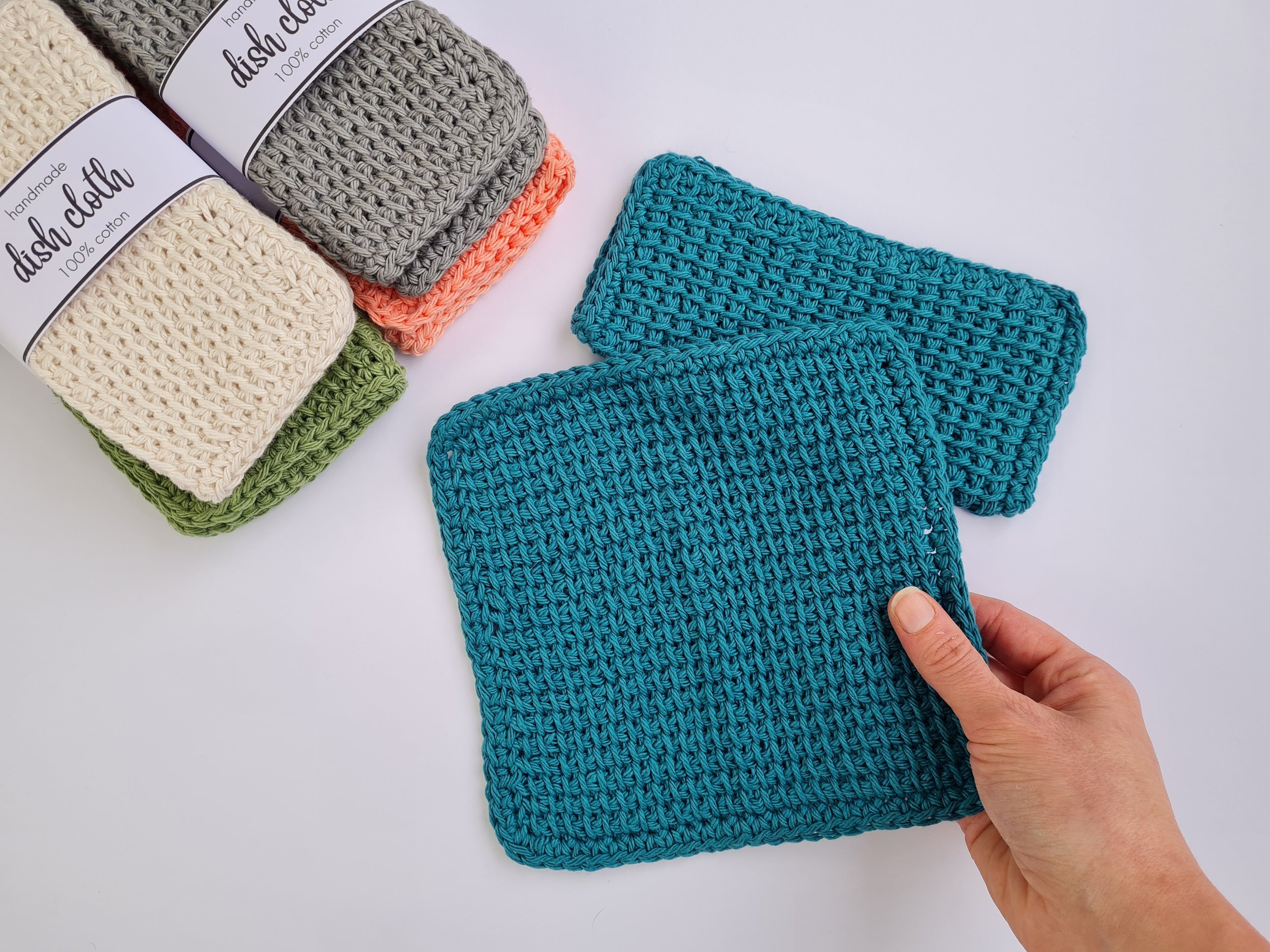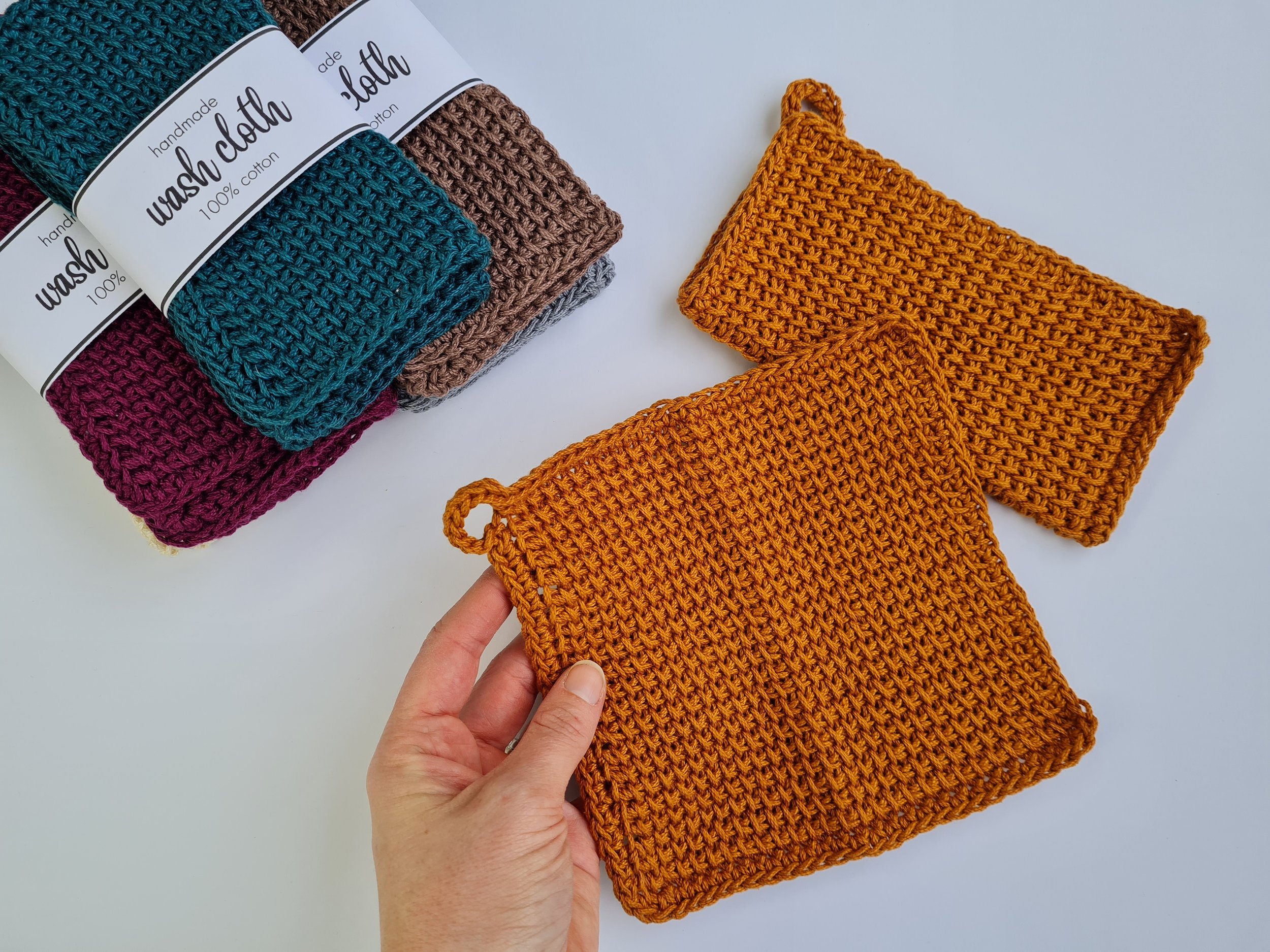Simple Tunisian Crochet Wash Cloth
In 2021 and 2022 I began to expand my business into attending craft markets and selling my makes. As my business began with and was mostly centered around mandala hoops, I wanted to expand my product range and offer a wider range of things at the markets.
When a local girlfriend approached me asking if I made wash cloths or dish cloths, my answer was NO, not yet! I might have been crocheting for 14 years at that point but I had never made a dish cloth, I just didn’t see the point when you can buy them so cheaply at the shops. Fast forward into my Mum years and the focus of what is important to me has shifted. I now care about the number of times I have to replace the cloth in the sink with those crappy ones I used to get at the supermarket. I now care that they are filled with synthetic fibers and chemicals and I now prefer a more natural product.
So I dug through my yarn stash and found all the cotton I could to whip up a dish cloth for her. I then started playing around with what I thought might make the perfect wash cloth. I considered shape, size, different stitch textures, and does the fabric keep shape or just stretch and sag? Many different experiments later and I came up with what I consider to be not only a nice looking wash cloth, but a highly functional one that is going to stand up to being used in the kitchen, on my lounge suite, on the floor, the dining table, really anywhere my kids spill things, which is most places really!
I also played around with the two different types of cotton out there. If you weren’t aware there was a difference, there is mercerized cotton and regular cotton.
Mercerized cotton has undergone a process to remove the fluffy-ness from the cotton to create a smooth and almost shiny cotton. This cotton is less absorbent than regular cotton but it does have a lovely soft feel when it is wet.
Regular cotton that hasn’t undergone the mercerizing process is more absorbent and has a slightly more raw feel to it as opposed to the softness felt with the mercerized cotton.
So because of these differences, I chose to use mercerized cotton (specifically Lion Brand 24/7 Cotton) for my face and body wash cloths. And I use regular cotton (specifically Lily Sugar N Cream cotton) for my kitchen dish cloths.
Size was another factor I mulled over, considering things like how do I use these cloths, when wiping up spills, when washing in the sink, and personally I prefer a wash cloth only slightly larger than my hand which I feel makes it easier to wring out and flatten to wipe a bench down.
I also considered being able to make two dish cloths out of one ball of Lily Sugar n Cream. This not only saves sewing in ends, but makes it more cost effective to make for selling, for markets and for crocheters to be able to make their own too.
As you can see, I thought about wash cloths for an extreme amount of time for a while!
If you aren’t a crocheter, or don’t feel confident with Tunisian crochet yet, you can grab yourself a set of dish or wash cloths here.
Simple Tunisian Dish Cloth Pattern
To make your own Simple Tunisian dishcloth, you will need:
One ball of Lily Sugar N Cream Cotton (Makes two dish cloths)
OR
One ball of Lion Brand 24/7 Cotton (Makes two wash cloths)
5.5 Tunisian Crochet hook
Stitches and abbreviations used (US terminology):
CH: Chain
SL ST: Slip stitch
SC: Single crochet
TSS: Tunisian Simple Stitch
FP: Forward Pass
RP: Return Pass
Simple wash cloth crochet pattern
Row 1: Using your Tunisian crochet hook, chain 30. Pull up a loop in the back bump of each chain. Complete the return pass.
Row 2 - 25: Work Tunisian Simple Stitch across row. Complete return pass.
Row 26: SL ST to bind off top row.
If you do not want a hanging loop, simply work one SC in each stitch and row and 3 SC in each of the corner stitches.
If you wish to create a hanging loop in the corner, follow this instruction first.
To create a hanging loop on the corner, first work one SC into the corner stitch, then chain 15 and work the second SC into the corner stitch. Then once your loop is done work around the SC border, making one SC in each stitch and row around your wash cloth, and three SC in each corner. Then when you arrive back at the loop, SL ST along each chain to reinforce it. Fasten off and sew in ends.
If you would like a handy printable PDF of this pattern, grab it for a few $$ in my shop here.







